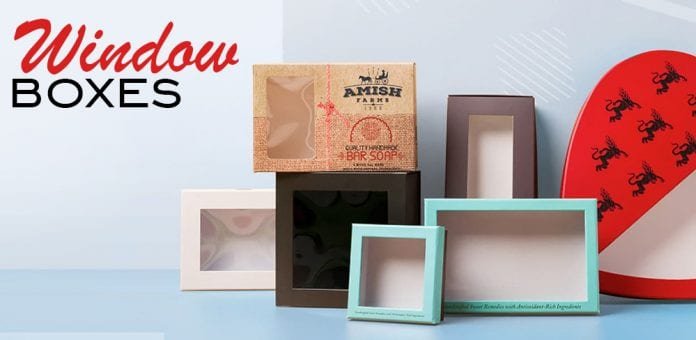Last Updated on January 29, 2022 by rida
The window boxes serve a great deal in elevating the presentation of different kinds of products placed inside them. But, do you know how their transparent panels are created? They are created by molding the PVC sheets but, what is molding actually? Molding is a manufacturing process through which you can shape different products using a rigid frame called mold. During the molding of PVC sheets, liquid polymers such as polyethylene or polypropylene are placed inside a hollow mold. This is done so that the polymer can take the shape of this mold. After that, different ranges of heat and pressure are applied to create the panels in desired shapes for window packages. Let us see all the molding techniques of PVC to make the panels for window packaging.
Table of Contents
Rotational molding:
Rotational molding, also called roto-molding, is a technique used to make hollow parts. It involves the operation of a metal mold in which the liquid resins are placed. After this, the metal mold is positioned in an oven unless the resins do not coat inside the mold. This constant rotation of the mold inside the oven results up in the forming of a centrifugal force that creates the parts of uniform wall thickness. The corners of the parts inside usually have thicker sections. It is the best molding process that can create incredibly large hollow parts. This type of process ends up in very little waste production, and the excess material can be reused for other purposes. This process is the most budget-friendly as well as environment-friendly for the molding of PVC to create panels for custom window boxes.
Injection molding:
Injection molding is a manufacturing method usually preferred for producing panels for window boxes wholesale supplies. It is because the price per unit part decreases once you opt for molding the PVC sheets in larger quantities through this technique. During this process, the material is placed inside a heated barrel where it is mixed. After that, the material is subjected to a mold cavity where cools down and, as a result, hardens to the configuration of the cavity. One of the fundamental benefits of opting for this technique is that it produces lower scrap rates. Another benefit is that it is very repeatable, which means that you can produce the same or identical part as compared to the first one. It is a wonderful trait that can be capitalized upon by you when you are eyeing for producing brand consistency. Seeing the benefits of this method, it can be said that it could prove one of the best choices for molding the PVC sheets for the creation of window panels.
Blow molding:
This type of manufacturing or molding process makes it possible for hollow PVC sheets to be formed. Usually, PVC material is melted down, which is then clamped into a mold. After that, the air is blown into the mold to cool it down. Different types of panels in various shapes can be formed through this process. It is a revolutionary form of technology that has brought a lot of ease to the lives of the people. Not only it assures quick manufacturing but, it is also suitable for high volume output projects. This process does not use higher levels of pressures which means the fuel consumed will be lower and, as a result, the machinery costs are lower. Apart from that, it enables you to use different methods to create panels for your custom window boxes, such as extrusion or glass blow molding.
Compression molding:
As per their name, this process involves the application of compression. In this process, a heated PVC material is subjected to a heated mold at first. After that, it is compressed or pressed into a particular shape as per your desire. Once you have compressed this material into the right shape of your choice, the heating process makes sure that the PVC material holds extreme strength. In the final step, you cool it, trim it, and remove it from the mold. One of the basic reasons why one should opt for this technique is that it is quite a simpler process with being cost-effective as well as compared to other methods. Furthermore, it does not use any kind of gates, sprues, or runners, due to which they do not generate much waste. On top of that, it is suitable for molding large and intricate parts.
Extrusion molding:
This technique is quite similar to injection molding, with a fundamental difference being that the produced shape is relatively long and continuous. Another dissimilarity in this method is that it utilizes a die instead of a mold. At first, the PVC sheets are melt down into a liquid which is then forced through a die. It results in a long and continuous tube-like shape. The shape of the panel for window packages is determined by the shape of the die you are using in this process. Using this method will not incur heavy prices as it is a cost-savvy process. You can also perform post-extrusion alterations since the PVC material remains hot when it leaves the extruder. The only drawback linked with it is that the size of multiple panels may vary since the PVC often expands after leaving the extruder.
To sum up, there are various ways you can mold PVC sheets for the production of a panel for your window boxes. For instance, you can use injection, extrusion, rotational, compressional, and blow molding processes. All of them make sure the provision of additional benefits to you and their use can vary according to your preferences.



























